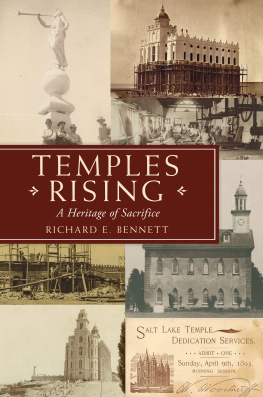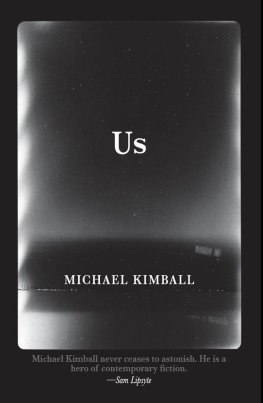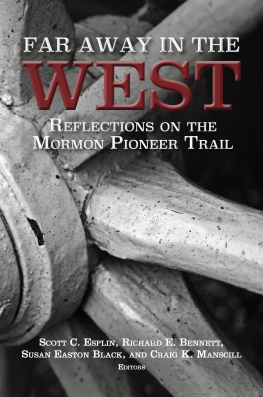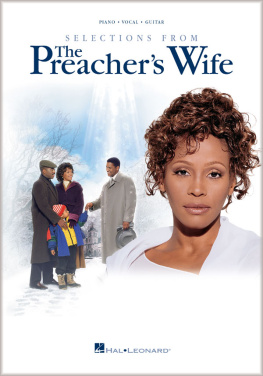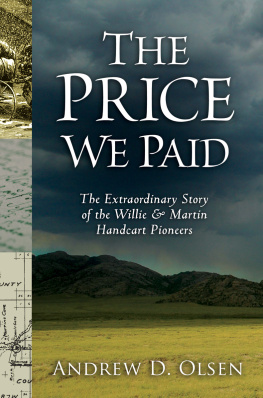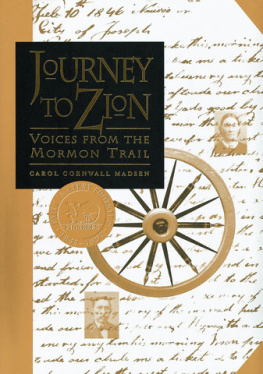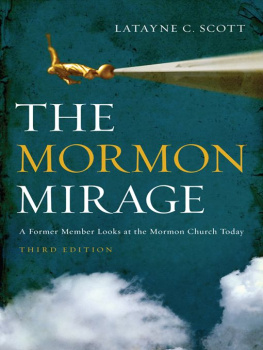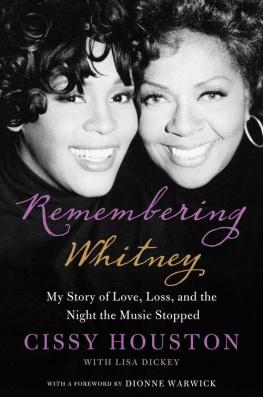Contents
15 February15 July 1846
16 July16 August 1846
17 August27 September 1846
28 September 184610 March 1847
11 March20 July 1847
21 July30 October 1847
Acknowledgments
This editorial project is an IOU of sorts that I have been intending to complete for a long time. I made up my mind over thirty-five years ago that someday I would edit and publish the Horace K. Whitney journals. I was convinced that this unpublished resource that had proven to be of such great value to me surely would benefit others. Despite my best intentions, however, lifes interruptions, six other books, and scores of articles got in the way. However, with the help and support of many people and an excellent publisher in the Religious Studies Center of Brigham Young University, that day has finally come!
I first became aware of the significance of the Whitney journals when working as a research assistant for Leonard J. Arrington, who had been recently appointed as church historian. I will ever look back upon this remarkable scholar, friend, and mentor as one of the richest blessings of my professional life. His love for Mormon history and for those engaged in researching and writing it was contagiously inspiring and so very encouraging. Likewise, I will ever owe a debt of gratitude to Marvin S. Hill, who taught me how to utilize primary source documents in evidential ways. Later, while a PhD student at Wayne State University, I was once again tutored by one of the finest gentleman-scholars in the landProfessor Philip Mason, director of the Walter P. Reuther Library of Labor and Urban Affairs. With his encouragement, I wrote my dissertation on the Mormon exodus and, in the process, came to understand and appreciate the professional world of archival science and the power of the manuscript.
After completing my course work at Wayne State University, I spent the next twenty years in Winnipeg at the University of Manitoba as head of the Department of Archives and Special Collections. While sundry career priorities inevitably got in the way, I never lost interest in the Whitney project. I want to thank my library directors through those years, who encouraged me to work on this labor of love as time permitted. With their encouragement and support, I received funding from the Social Sciences and Research Council of Canada to continue work on this project. Later, after joining the faculty at Brigham Young University in 1997, I continued to receive institutional support from the Department of Church History and Doctrine and from Religious Education in the form of research grants and occasional time off to continue in this work. Finally, a generous grant from the Frederick W. and Jolene Edmunds Rockwood Family Foundation greatly facilitated the hiring of student editorial support staff, expedited the tedious work of carefully editing, proofreading, and digitizing these journals, and made possible the aquisition of several images herein. Without the foundations financial assistance, this project would still be years away from completion.
I also need to thank the Horace K. Whitney family for preserving and donating the Whitney journals in the first place to the Church History Library of the Church of Jesus Christ of Latter-day Saints so many years ago. Long after their donation, Edyth Jenkins Romney, longtime editorial assistant and secretary to what was then called the Church Historians Office, spent months making a remarkably accurate initial transcription of these ofttimes very hard to read journals, a wonderful time-saving transcription which has proven very valuable to the present project. Of course, I appreciate the Church History Library for permission to edit and publish these journals after these many years. I wish also to thank the staff at the LDS Church History Library, the Church History Museum of the Church of Jesus Christ of Latter-day Saints, the L. Tom Perry Special Collections in the Harold B. Lee Library at Brigham Young University, Special Collections and Archives at the Merrill-Cazier Library at Utah State University, the Wyoming State Archives, the Nebraska State Historical Society, and the Wisconsin Historical Society for their valuable assistance.
Many student research assistants have also assisted me through the years on this project, some whose names I have forgotten. My thanks especially to the following: Hugh Hannesson, who was me with me at the very beginning; Natalie Larson, who spent the better part of a year proofreading the text and typing the original typescript copy on the computer; and Wendy Top, my current research assistant, who has been particularly helpful in ensuring the quality of the glossary of names. Finally, I owe a special, more recent debt of gratitude to the editorial staff of the Religious Studies Center at Brigham Young University. These include Thomas A. Wayment, publications director, who agreed to take on this project; Joany O. Pinegar, publications supervisor; editors Devan Jensen, Tyler Balli, and Megan Judd; designer Emily Strong; and Brent Nordgren, production supervisor.
Above all, I thank my wife, Patricia, who once again has put up with the other love of my lifewriting and editing works of church history. She has been a wonderfully patient, uncomplaining partner, going where I have gone, listening, encouraging, and ever supporting.
Introduction
There are many unwritten incidents which could be related with profit, and prove interesting reading to those who pioneered across the barren, trackless wastes of the great American desert to these once lone and dreary vales of the Rocky Mountains, as well as scores who are not of that number and even many strangers would enjoy reading of those early scenes among the Mormons.... I mention this as a stimulus to prompt others to write and give to the world the benefit of their travels and experience with this people.
Helen Mar Whitney, Womans Exponent , vol. 15, no. 6, 15 August 1886, pp. 4647
One of the ironies of Mormonism is that, although it is an American religion, the United States of America has struggled to accept it. In fact, the early history of the Church of Jesus Christ of Latter-day Saints is one long chapter of rejection, persecution, and expulsion. For years after its founding in upstate New York under the hand of Joseph Smith Jr. in April 1830, the church was on the run from pillar to post: first, New York; then Kirtland, Ohio; Independence and Far West, Missouri; Nauvoo, Illinois; and finally, the Rocky Mountains. Scholars have long argued over what poisoned the mix. Perhaps it was its radical claim of being the only true and restored church of Christ upon the earth. Or its adamant belief in the divine authenticity of the Book of Mormon, which Smith translated from ancient golden plates that he discovered in upstate New York. Furthermore, its fervent expectation in the imminent Second Coming of Christ to its new Zion in Jackson County, Missouri, seemed peculiar at best to local citizens bent on establishing a new home in the West.
Whatever the case, many Americans came to believe that the allegiance of most early Mormons was more to their prophet than to the president, more to revealed scripture than to the American Constitution. There may have been too much talk of a kingdom of God for a restless republic of the people to accept. And when large concentrations of Latter-day Saint Yankees began moving to the slave state of Missouri in the early 1830s intent on establishing their Zion, it inevitably created a climate of suspicion and distrust amidst a clash of cultures that eventually led to their undoing. The sad fact is Mormonism could not have chosen a more difficult time, a less promising place, amidst a more unwelcoming people to establish their New Jerusalem than in Missouri in the early 1830s.
Next page

